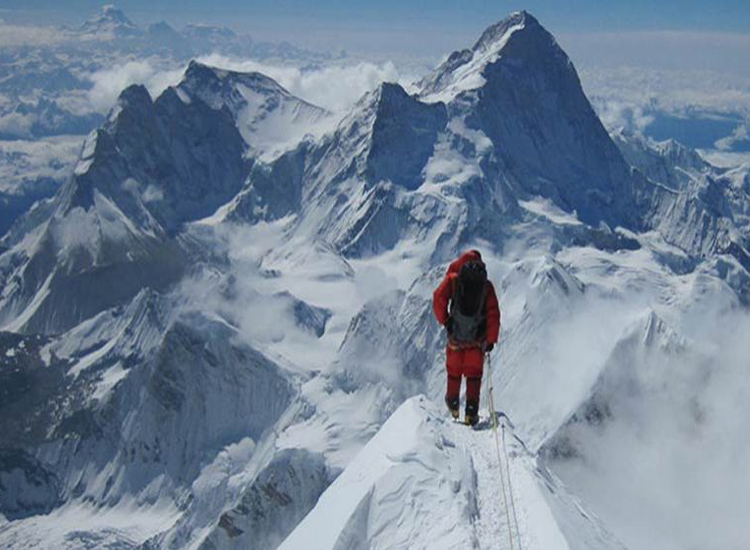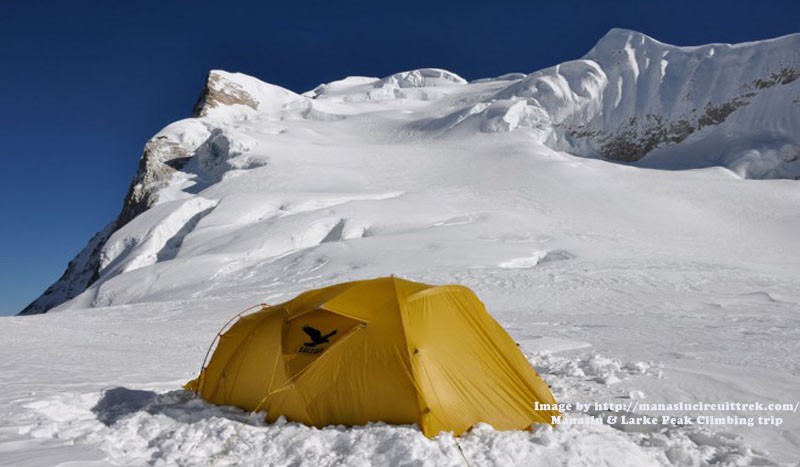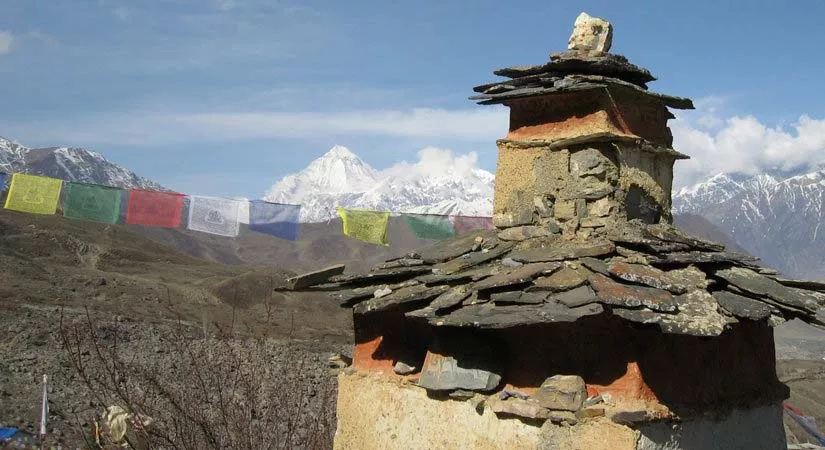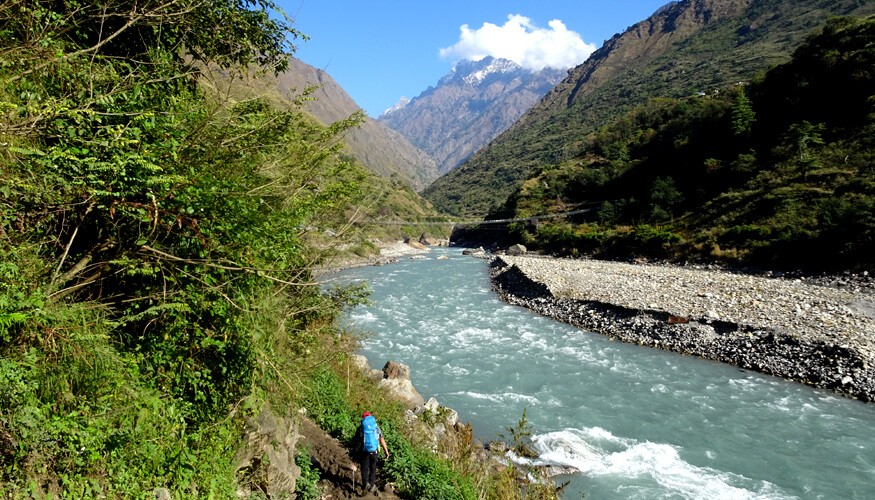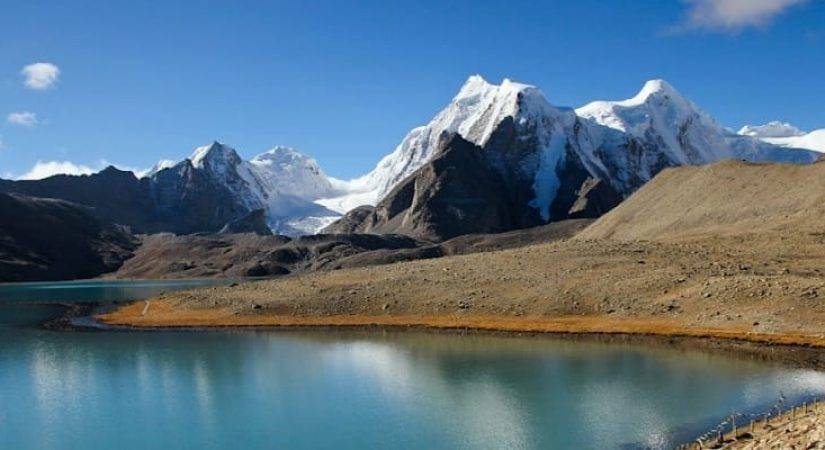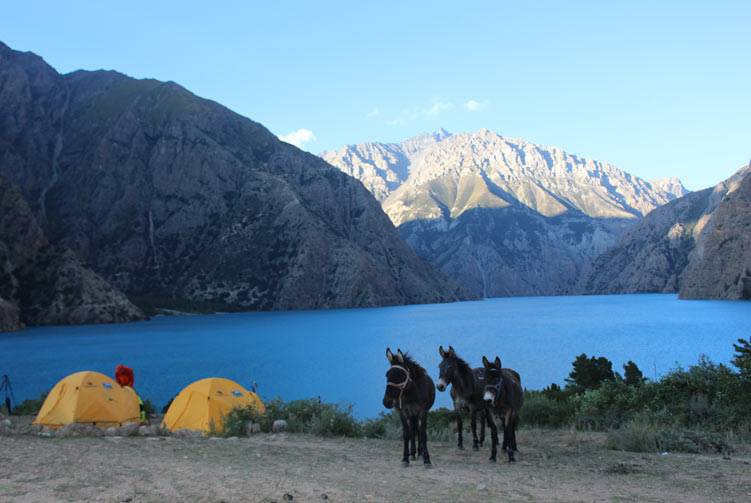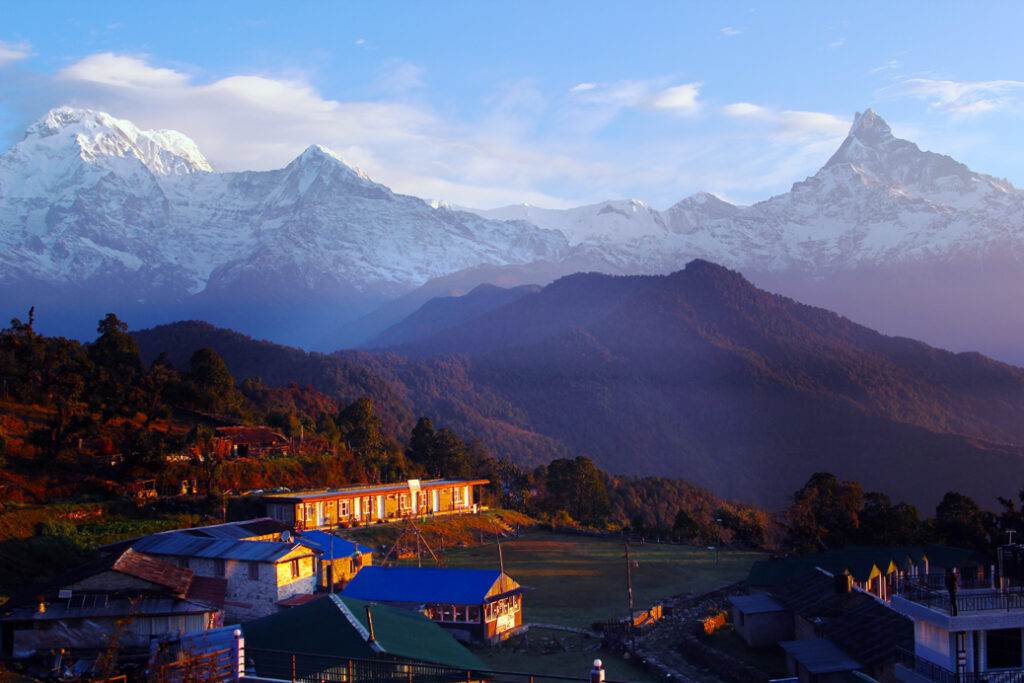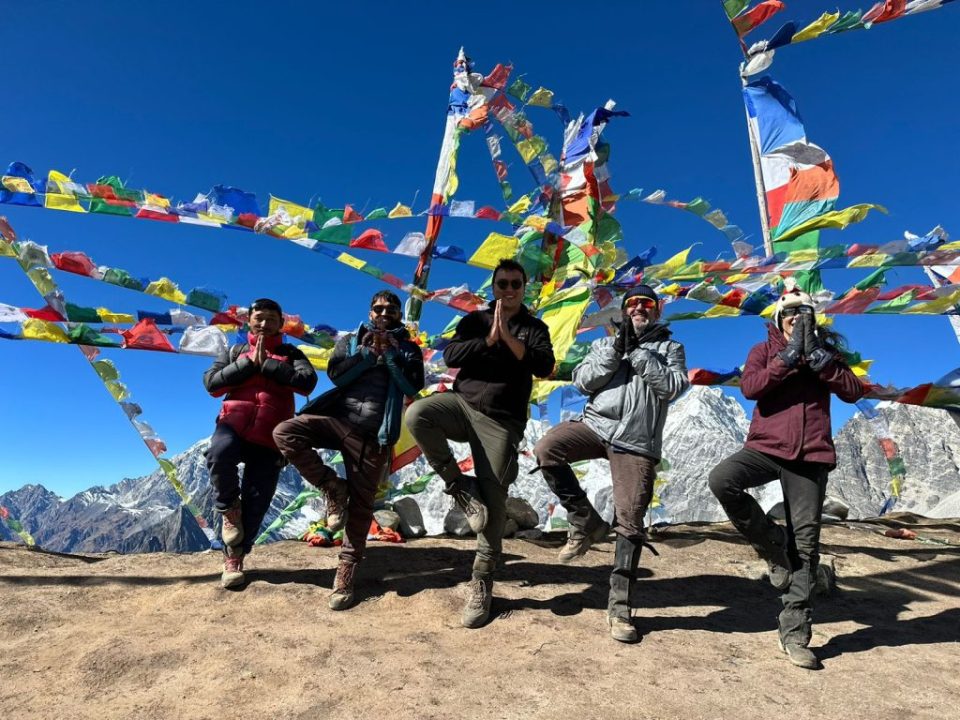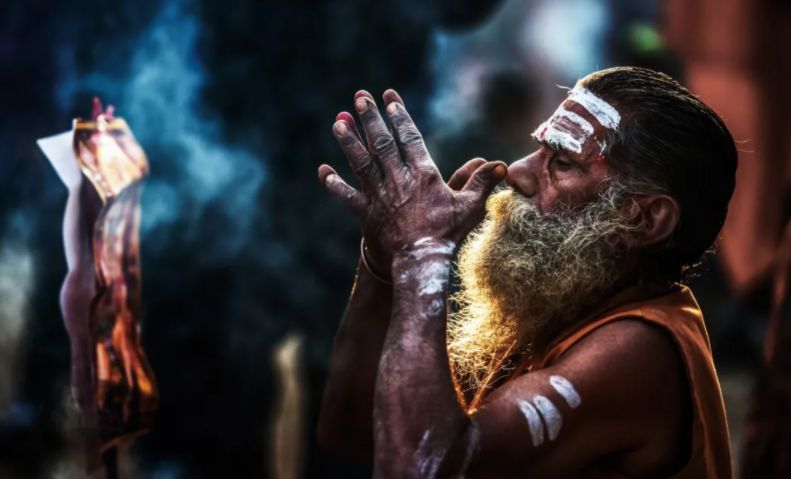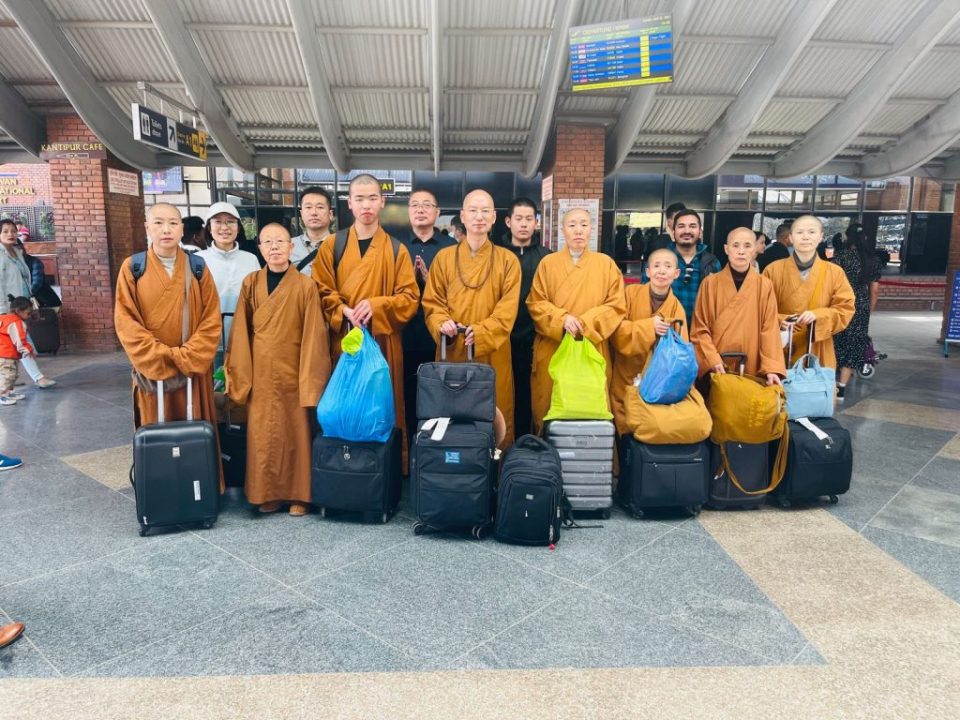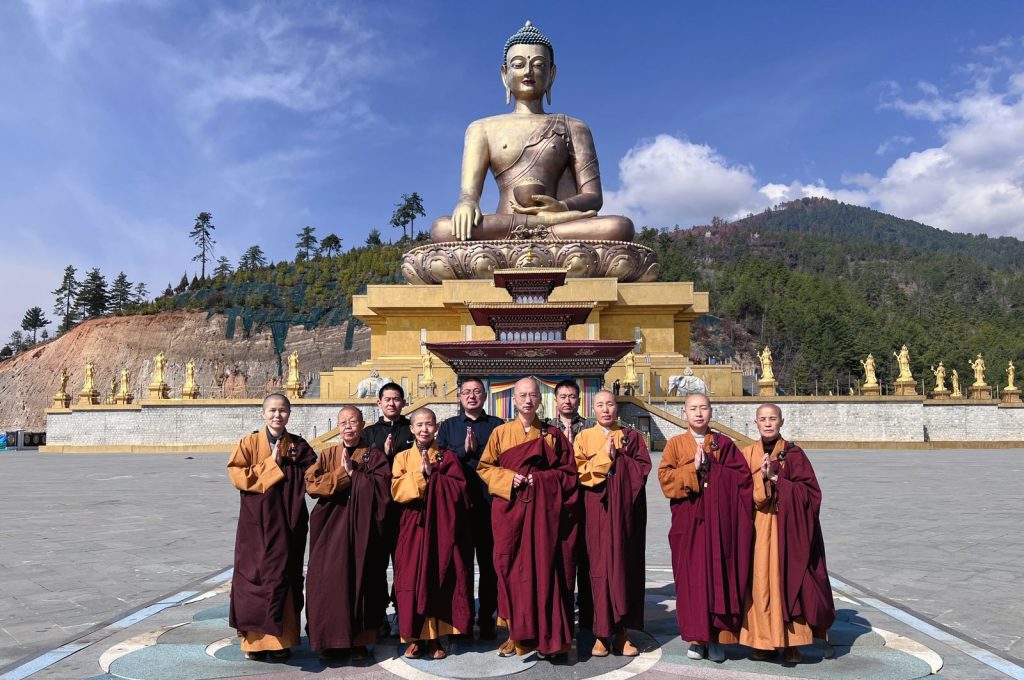Larkya Peak Climbing
Trip Introduction
Larkya is a mountain in the Manaslu Himalayan range. It consists of two peaks: Sano Larkya and Thulo Larkya. It is located at a height of 6,249m/20,496ft. It is situated within the Manaslu Conservation Area. It is situated in the Gorkha District. It has only recently become available to trekkers. It is listed in the peak climbing category A. Manaslu, Cheo Himal, Himlung Himal, Nemjung, Gyaji Kang, Kang Guru, and Annapurna II are all visible from here.
You will pass through the various natural landscape on your Larkya Peak summit adventure, including lush forests, deserted and rocky terrains. This trek’s highlights include passing through Rhodendron and Oak forests. The Path leads you from the warm lowlands with their rice and millet terraces to the mighty Budi Gandaki gorges with their aqua waters and amazing waterfalls. It allows you to see how religious and cultural aspects of the region differ depending on location. The Hindu influence can be seen in the lower area of Manaslu. And the higher region is strongly influenced by the Buddhist religion, and one of the trek’s major highlights is crossing a high mountain pass, Larkya La pass, and summiting Larkya Peak.
The 18-days trek begins with a seven- to eight-hour drive from Kathmandu to Soti Khola via Arughat. The trek begins in Soti, a small village on the banks of the Budhi Gandaki River. At the foot of Manaslu, reaches the village of Samagoan. Samdo, the highest village in the Budhi Gandaki valley and home to Bhotias, may be reached after a half-day hike from Samagaon. Further, we will acclimatize in Samdo. From there we will walk toward Larkya Base camp and High Camp. We will summit Larkya peak and will continue your hike to the Larkya La pass, and then descend to the Bimtang meadowland. From there, make your way to Dharapani, the trek’s final point.
Trip Facts
- Country: Nepal
- Duration : 19 Days
- Maximum Altitude: 6,249m/20,496ft
- Region: Manaslu
- Meals: Breakfast, Lunch, Dinner
- Accommodation: Hotel, Lodge, Teahouses, Camp
- Grade: Challenging
- Best season: Mar, Apr, May, Sep, Oct, Nov
Trip Highlights
- Trek beneath Manaslu, the world’s eighth highest peak.
- Trek on the less crowded trails.
- Explore and learn about the Bhotias culture, which has been untouched by modern civilization.
- Cross the Challenging Larkya La pass.
- Jaw-dropping Manaslu, Cheo Himal, Himlung Himal, Nemjung, Gyaji Kang, Kang Guru, and Annapurna II are all visible in the distance.
- Pass through the natural beauty, landscape, Flora, and Fauna.
- Summit Larkya Peak 6,249m.
Is this trek appropriate for you?
This trek includes 14 days of strenuous climbing. You’ll be trekking for a minimum of 4 to a maximum of 10 hours per day, reaching elevations of over 5000 meters at times. We cannot overestimate the importance of being in excellent physical shape and health, which requires training before your trip to ensure that you are properly prepared.
This is the trek for you if you have previous rock climbing or wall climbing experience. It is recommended that you have prior experience with high-altitude trekking.
The weather in the Himalayas can be unpredictable, you must plan and prepare accordingly, as well as stay up to date on the weather forecast.
The teahouses, or trekking lodges, where we stay on the trek are very basic, with just basic services. Hot water may not be accessible at all times and may be charged extra, as well as access to electrical outlets for charging electronics. Wi-Fi is available in some areas, although the quality of the connection may be poor.
The path twists and turns through challenging terrain. At 6,249 meters, you’ll reach the highest peak. Because of the weather, isolation, and high altitude of this walk, it’s critical to take it carefully and stay hydrated.
Itinerary
1. Arrival at TIA Kathmandu (1,400m/4,592ft)
2. Drive to Soti Khola Via Arughat (700m/2,296ft) 7-8hrs
3. Trek from Soti Khola to Machha Khola (870m/2,854ft) 5-6hrs
4. Trek from Maccha Khola to Jagat (1,340m/4,396ft) 6-7hrs
5. Trek from Jagat to Deng (1,865m/6,118ft) 6-7hrs
6. Trek from Deng to Namrung (2,630m/8,626ft) 6-7hrs
7. Trek from Namrung to Sama Gaon (3,525m/11,565ft) 6-7hrs
8. Acclimitization Day in Sama Gaon (3,525m/11,565ft)
9. Trek from Sama Gaon to Samdo (3,850m/12,631ft) 4-5hrs
10. Acclimatization Day in Samdo (3,850m/12,631ft)
11. Trek from Samdo to Larkya Phedi (4,494m/14,740ft) 5-6hrs
12. Trek from Larkya Phedi to Larkya Base Camp (5,170m/16,957ft) 5-6hrs
13. Trek from Larkya Base Camp to High Camp (5,650m/18,532ft) 4-5hrs
14. Summit Larkya Peak (6,249m/20,496ft) and trek to Bimtang (3,590m/11,780ft) Via Larkya La (5,106m/16,752ft) 9-10hrs
15. Contingency Day for Summit
16. Trek from Bimtang to Dharapani (1,963m/6,440ft) 7-8hrs
17. Drive back to Kathmandu (1,400m/4,592ft) 9-10hrs
18. Rest Day
19. Departure
Itinerary
Departure from : Kathmandu, Nepal
Arrival On : Kathmandu, Nepal
Day 1
Arrival at TIA Kathmandu
Upon arrival at Tribhuvan International Airport (TIA). Our agent will greet you and accompany you to the hotel. Drive to the hotel and check-in. Our guide will come to see you in the evening and give you a brief overview of the journey. At the hotel, we had dinner and stayed the night.
Day 2
Drive to Soti Khola via Arughat
Today, after breakfast, we’ll take the Kathmandu-Pokhara highway to Soti Khola. We’ll drive through a small town, a green terrace, and a hillside. From Kathmandu to Arughat, we’ll be driving on paved roads. We’ll stop for lunch on the way. We’ll be on the road for 7 to 8 hours. Dinner and Overnight at the Lodge.
Day 3
Trek from Soti Khola to Machha Khola
Today is the first day of our trek; we will leave for the Machha Khola after breakfast. We will be walking through various landscapes such as forests, rice paddies, rushing rivers, and waterfalls. We should go through the bridge. We’ll hike through a beautiful forest and up a hill above the Budhi Gandaki River. We’ll stop for lunch on the way. We’ll be passing through the Gurung village of Khursane. We will be walking for about 5 to 6 hours. Dinner and Overnight at the Lodge.
Day 4
Trek from Maccha Khola to Jagat
We’ll leave for Jagat after breakfast today. Today, we’ll follow the George and make our way up to the river. We will be passing through a narrow path first, followed by a gentle path that goes up and down. To get to Khorlabesi, we’ll have to cross the Tharo Khola. We’ll arrive at Tatopani after some uphill and downhill hiking and rest for a while. We’ll ascend another hillside before crossing the Budhi Gandaki on a suspension bridge. We’ll stop for lunch on the way. Thus, after a few ups and downs, it arrives at the wonderful village of Jagat. Dinner and Overnight at the Lodge.
Day 5
Trek from Jagat to Deng
We’ll leave for Deng after breakfast today. We’ll be walking through a dense tropical forest. Our trails begin with a climb up a rocky hill from which you can see Sringi Himal. We’ll keep walking upstream until we reach a long suspension bridge in Philim, a large Gurung village. We’ll stop for lunch on the way. The trail then passes through millet fields before arriving at Ekle Bhatti. We’ll be walking for 6 to 7 hours. It travels through bamboo forests before arriving in Deng, a Buddhist village. Dinner and Overnight at the Lodge.
Day 6
Trek from Deng to Namrung
After breakfast today, we will depart for Namrung. After a few minutes of walking, we will cross the Budhi Gandaki River and climb up to Rana village. The valley, which Passes through lush forests, alpine vegetation, and charming villages inhabited by ethnic groups from the Manaslu region we’ll eat our lunch on the way. Along the way, we’ll pass through several gompas. The trail then climbs through bamboo and rhododendron forests before arriving in Namrung. Dinner and Overnight at the Lodge.
Day 7
Trek from Namrung to Sama Gaon
After breakfast today, we’ll depart for Sama Gaon. While walking through the village, you will be able to see Siring, Ganesh Himal, and Mount Himal Chuli to the south. We’ll be climbing steadily into the alpine on the trail. We’ll stop for lunch on the way. After Lho, the trail descends to a stream and follows it up for a long-distance through damp forests until it reaches the plateau at Shyaula. We’ll be walking for 6 to 7 hours. Dinner and Overnight at the Lodge.
Day 8
Acclimatization Day in Sama Gaon
Today is our acclimatization day in Sama Gaon, so we will begin our day a little later than usual. Relax and enjoy your breakfast; we’ll need plenty of rest for our next adventure. Alternatively, we can explore or go on a short hike to learn about Sherpa culture. Hiking up a hill near Sama Gaon will lead you to the old gompa, Pungyen Gompa, a monastery with spectacular views of the glacier. You can learn about and experience Sherpa culture while also resting for the day. Dinner and Overnight at the Lodge.
Day 9
Trek from Sama Gaon to Samdo
We’ll be leaving for Samdo today. We’ll drop down to the Budhi Gandaki River and follow the bridge. We will only be walking for a short period today, so our bodies will be able to adjust easily. We’ll stop for lunch on the way. We’ll be walking for 4 to 5 hours. After a pleasant walk, we arrive in the beautiful village of Samdo, which is famous for its yak grazing. Dinner and Overnight at the Lodge.
Day 10
Acclimatization Day in Samdo
Today is our acclimatization day in Samdo, so we will begin our day a little later than usual. Relax and enjoy your breakfast; we’ll need plenty of rest for our next adventure. Today you can either rest all day or go on a hike; there are two hike options. You can hike up the easy trail or the slightly more difficult one. This route offers spectacular views of Manaslu as well as other Himalayan ranges such as Simrang, Hiunchuli, Ngadi, Larkye Peak, Cheo, and possibly Kang Guru behind the pass. The difficult path will be a full-day hike. Dinner and Overnight at the Lodge.
Day 11
Trek from Samdo to Larkya Phedi
We’ll leave for Larkya Phedi after breakfast. We’ll be walking for 5 to 6 hours. We’ll descend to a bridge that crosses the Gayala Khola. From there, we’ll make our way uphill toward several of the Mani stones. We’ll stop for lunch on the way. We will continue to ascend, with breathtaking views of the mountains. We’ll arrive at Larkya Phedi after a few hours of walking. Dinner and Overnight at the Lodge.
Day 12
Trek from Larkya Phedi to Larkya Base Camp
We will depart for Larkya Base Camp after breakfast. We’ll be walking for 5 to 6 hours. As we climb higher, we must ascend gradually. Higher altitudes will have less vegetation. On the way, we’ll take in the scenery of the mountains. We’ll stop for lunch on the way. Once we reach the Camp, we will set the tent and rest and drink lots of water. Dinner and Overnight at the Camp.
Day 13
Trek from Larkya Base Camp to High Camp
We will depart for High Camp after breakfast. We’ll be walking for 4 to 5 hours. As we gain altitude, we will gradually make our way through the narrow path. There will be very little greenery. We will be walking on a snowy path, so we must proceed with caution. We will set up camp and freshen up after arriving at Base Camp before enjoying hot drinks and lunch, after that you will have a training period during which your guide will teach you how to use climbing equipment such as an ice ax, jumar, and crampon, as well as some other basic skills. We will become familiar with the necessary equipment and learn basic rope skills. You’ll need to practice to get it right. Dinner and overnight at High Camp
Day 14
Summit Larkya Peak and trek to Bimtang via Larkya La
After breakfast, we’ll set out for the summit of Larkya Peak. We’ll be walking for 9 to 10 hours. Today, we must begin our day at a very early hour. We need to climb on the Rugged Path. To get to the top, we need to properly equip ourselves and follow the instructions. We’ll have to walk on ice and snow. After reaching the summit, we will have a spectacular view of Manaslu, Cheo Himal, Himlung Himal, Nemjung, Gyaji Kang, Kang Guru, and Annapurna II, we will explore and enjoy the peace at the top before descending to Bimtang via Larkya la Pass. We’ll pass by several clear glacial lakes, lovely valleys, and a diverse range of flora and fauna, as well as snow-capped mountains. Himlung Himal, Cheo Himal, Kang Garu Peak, and Annapurna II can all be seen from Larkya La pass. After arriving at Bimtang, we will enjoy hot drinks and enjoy the achievement. Dinner and overnight at Camp.
Day 15
Contingency Day for Summit
An additional day in case severe weather prevents you from summiting on time. This day can also be used in the event of an emergency, such as canceled or missed flights, delays due to minor injuries or weather conditions, and so on. If you keep to your timetable and everything goes according to plan, you can spend the extra day exploring a Sherpa village along the way.
Day 16
Trek from Bimtang to Dharapani
Today is the last day of your journey; after breakfast, we will depart for Dharapani, gradually descending through the bamboo, pine, and rhododendron forest. We’ll stop for lunch on the way. We will be walking for about 7 to 8 hours. Dinner and Overnight at the Lodge.
Day 17
Drive back to Kathmandu
Today, after breakfast, we will depart for Kathmandu. Kathmandu is 118km away from Dharapani. We’ll take the Kathmandu-Pokhara highway to reach Kathmandu. We will be on the drive for 7 to 8 hours. You will be driven to the hotel, where our representative will assist you with the check-in process. Dinner and Overnight at the Hotel.
Day 18
Rest Day in Kathmandu
Today is your last day in Kathmandu and your relaxation day. You are free to do whatever you choose with your day. You are free to walk through Thamel and Basantapur streets as much as you wish. Enjoy a complimentary farewell supper at a traditional Nepali restaurant later that evening.
Day 19
Departure
The 15-day journey has concluded. Today is your last day in Kathmandu. Our representative will have a short discussion on the trip and take your feedback after a hearty breakfast. Following this session, he will drive you to the airport in our private transportation 3 hours before your trip.
Route Map
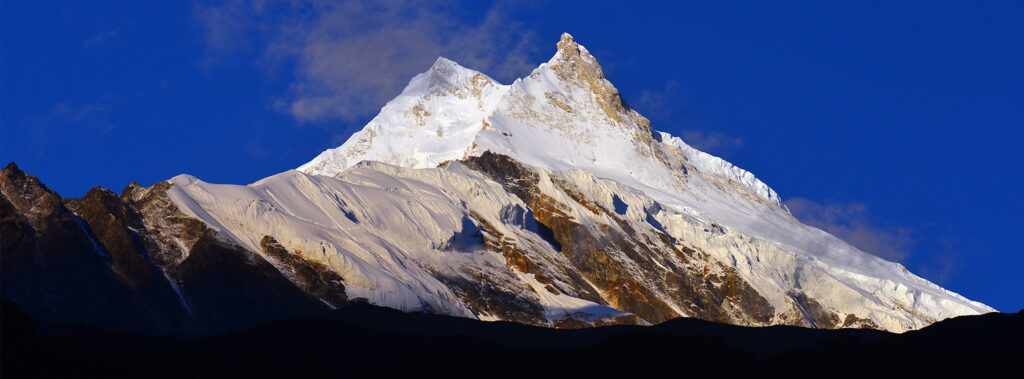
Altitude Map
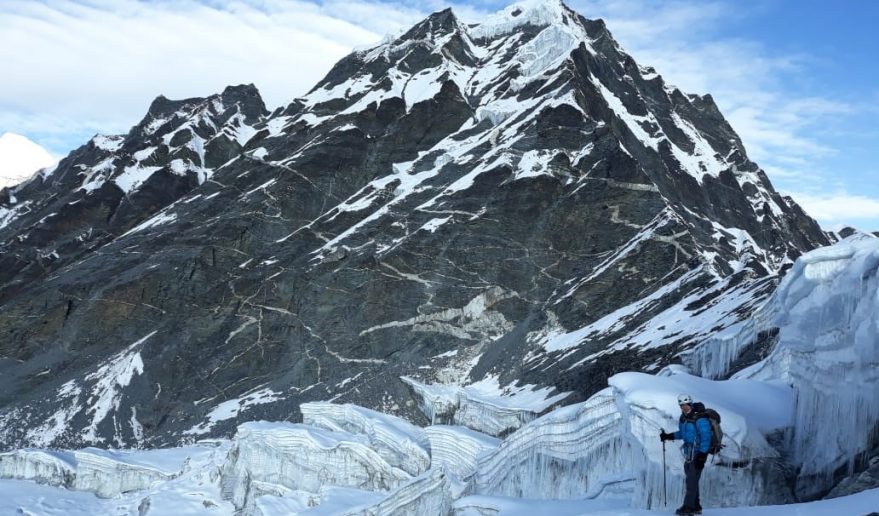
What's Included
- Arrival & Departure: Airport – Hotel transfer – Airport (Pick Up and Drop).
- Hotel Accommodation in Kathmandu: 3nights at Star categories hotel on twin sharing on BB basis
- Welcome Dinner and farewell dinner at Nepali culture restaurant
- Food & Lodging: 3 meals a day (Breakfast, Lunch, Dinner) along with accessible accommodation sharing at Hotel/Lodge/Teahouse/Camp during the trek.
- All necessary Permits and paperwork.
- All government and local taxes if necessary.
- Trekking Map: Manaslu Region trekking map.
- Member transportation: – Road Transportation: From Kathmandu – Soti Khola and Dharapani to Kathmandu.
- Drinking water: 2 liters of boiled water to carry on thermos per day per member.
- Guide: Government licensed Guide (English speaking) during the trek
- Porter: Porters (2 trekkers: 1 porter) up to 15kg during the trek.
- Insurance: Insurance for all involved Nepalese staff during the trek.
- Comprehensive Medical kit.
What's Not Included
- Air Fare: International flight airfare (from and to Kathmandu).
- Nepal entry visa fee.
- Extra night in Kathmandu: Extra nights’ expenses in Kathmandu. In case of early arrival or late departure, early return from Trekking (due to any reason) than the scheduled itinerary.
- Personal Insurance: Travel and high-altitude insurance. *Mandatory.
- Personal Expenses: Telephone calls, Internet, Toiletries, battery recharge, hot shower, laundry, soft drinks, beer, and any alcoholic beverages.
- Personal Equipment: Clothing, Packing Items or Bags, Personal Medical Kit, Personal Trekking equipment.
- Rescue Evacuation: Medical and emergency rescue evacuation costs if required. (Rescue, Repatriation, Helicopter, Medication, Medical Tests and Hospitalization costs).
Equipment List
What to bring ?
General
Tailor Your Holiday
Everyone has their own preferences in terms of destination, journey time, and budget. As a result, sticking to our plan isn't necessary. We will create a personalized itinerary for you that includes accommodations, transportation, meals, and tour guides. We guarantee you the best Tailor-made Package because this is your trip. You have the option to personalize it, as your liking. Let us Plan together to make your Vacation worth it.
Fixed Departure
Why Travel With Us?
The ideal season to travel
Spring
March: The month of March is ideal for trekking and admiring the spectacular mountain peaks. The Manaslu region trekking trail will be crowded with hikers beginning in March. In the Manaslu region, the spring season begins in March, the month of the Rhododendron. Trekking in March will provide you with the most memorable experiences in a pleasant and mild climate. At lower altitudes, the weather is not particularly hot, and at higher altitudes, it is not particularly cold. The views of the mountains are spectacular, and the trail is excellent. Nature can be experienced at its most beautiful.
April: April is the beginning of spring in Nepal, and the weather is ideal for trekking to the Manaslu region. The views are bright and clear at this time of year, and everyone enjoys spring. The surroundings are vibrant and colorful, with rhododendrons in bloom. It is the best time of year to see various bird and butterfly species. During your April trip to the Manaslu region, the weather is completely in your favor. The moderate heat of the sun, combined with the lack of wind, makes it ideal for trekking. Furthermore, the amount of rain and snow is insignificant.
May: May, the final month of the spring season in Nepal, is much hotter. Manaslu region trek in May has the highest temperature of the year. Temperature and weather will vary depending on the altitude throughout the trek. During the day, the weather in the lower sections will be extremely hot. The nights, on the other hand, are tolerable.
Summer
June: June is the coldest time of the summer and has the least amount of rainfall. The month of June is the offseason and therefore less popular for trekking. In the region, June marks the start of the wet monsoon season. The weather is slightly humid, and you can enjoy nature while it is wet and cool. If you enjoy the rain, rainbows, and less crowded trails, this is the month for you. During this month, the air begins to become humid due to continuous rain.
July: Trekking in Nepal in July isn’t always joyful because the heavy rains can block your view of the beautiful mountains you’ll pass through. In July, you will notice that the temperature is not as chilly in the Manaslu region. As the rain washes away the dust and pollution, the environment opens up and becomes very fresh, and you will be able to enjoy nature despite the chilly weather.
August: In the Manaslu region, August is the off-season for trekking. In August, the monsoon season produces strong rains, especially in lower places. Due to weather-related concerns, most hikers avoid this month. The summer monsoon season comes to an end in August. It rains regularly, and you may feel a little chilly as a result. You should also be cautious because the trails are slippery and the possibility of landslides and avalanches is considerable.
Autumn
September: The monsoon season finishes in September, marking the start of the fall season. The optimum time to trek to the Manaslu region is in September. The weather and temperature for the Manaslu region Trek are ideal. The temperature is pleasant during the day, but it is extremely chilly at night.
October: October is the month that falls between September and November. As a result, it keeps both monsoon rain and winter’s biting cold at distance. The weather is warm and pleasant in October, with clear skies and fresh air. The nights, on the other hand, are a little chilly, with a brisk breeze coming from the campsite. Throughout October, the weather is pleasant, allowing people to enjoy an unobstructed view of the snow-capped peaks. They can also visit bright valleys and interesting scenery of various colors.
November: The last declared peak season for trekking in Nepal is November. Bright, sunny days and beautiful skies characterize November. On the treks, these provide breathtaking, crystal-clear vistas of the mountains. The days are bright and sunny in November. The sky is clear, with perhaps a few stray clouds possible.
Winter
December: In the Manaslu region, December is a rather dry month. It receives fewer than 25 millimeters of rain every year. The Manaslu region is in the shadow of the Himalayas. As a result, December has a lower chance of rain. It is also possible to walk the Annapurna Region Trek in December. In December, hikers will get a unique perspective of the region.
January: In Nepal, January is in the midst of winter. The higher elevation receives moderate snowfall, whereas the lower elevation is ideal for trekking. During the day, you will feel warm, but as night falls, you will feel cold. In January, these areas receive little to no rainfall. As a result, the skies remain clear and the surroundings appear even sharper. The trails will be covered in snow, so you may need crampons to cross the pass.
February: The Manaslu region trek in February is an escape from the hustle and bustle of everyday life to a place where all you can see are mountains and scenery. It’s peaceful because February is the coldest month of the year. Most people dislike trekking in the winter because they believe it is extremely difficult.
Drive to Soti Khola
- The Distance between Kathmandu and Soti Khola is 136 km.
- Traveling to Soti Khola by jeep will take around 7-8 hours.
- The route to Soti Khola from Kathmandu is Naubise – Galchi – Kurintar – Muglin – Arughat, and lastly Soti Khola.
Altitude sickness
Altitude sickness is a sneaky monster that may attack even the fittest trekkers. This demand doing everything in your power to prepare for altitude trekking and taking things carefully throughout your journey. With increasing altitude, the amount of available oxygen decreases, which is the primary cause of high-altitude sickness.
The Larkya Peak climbing is a high-altitude trek that needs proper acclimatization. Your body requires time to adjust to thin air, so start at a lower altitude and work your way up. Some of the symptoms of Altitude sickness are:
Early symptoms of altitude sickness
- Increased breathing.
- Increased urination.
- Headache and Restless sleep.
- Periodic breathing at night as a result of altitude.
- Dehydration.
- Later symptoms
- Shortness of breath.
- Extreme fatigue.
- Respiratory failure.
- Cerebral edema.
- Coma.
Certain care should be made to ensure that the situation does not worsen. However, if the symptoms worsen, you may need to return to a lower height and seek medical help. There are, however, several other precautions you may take while trekking to lessen your risk of altitude sickness.
Trekkers can change their bodies by slowly and gradually climbing, as our bodies require time to adjust to the oxygen level. At least one day of acclimatization rest is required for high altitude trekking, and you should go as high as possible before returning to a lower height for the night.
You should do various strength training exercises such as running, cycling, jogging, push-ups, and going to the gym to acquire strength and stamina for your adventure.
As the air gets increasingly thin, an increase in elevation reduces oxygen levels, and in the Manaslu region trek, an increase in altitude also means less vegetation. The consumption of alcoholic beverages, cigarettes, and tobacco decreases the body’s water content.
The greatest remedy is to stay hydrated at all times. On your walk, instead of drinking cooled water, drink warm water.
Diamox is the most effective altitude sickness medication; thus, you should bring a subscription with you on the trek. However, you should consult with your physician to see whether it is advantageous.
Things to know before traveling to Manaslu Region.
Drinking-Water in the Manaslu region
Especially for trekkers, it is very necessary to hydrate your body at a higher altitude than in lower elevations to avoid dehydration and altitude sickness. Lack of fluid can be the main hindrance during the trek. You should hydrate your body with at least 3-4 liters of water daily (Tea, soup, or normal drinking water).
Getting water in the Manaslu region is not difficult but getting safe drinking water is. Throughout the trek, you will come across tap and spring water, but it is not safe to drink without purifying it. You can buy the plastic bottled water in the teahouses but get expensive as you climb to higher altitude, and it pollutes the local ecosystem.
Every day, carry enough water for the day before beginning the trek. In and beyond the Larkya Peak Base Camp there are no water resources. So that, from the base camp to summit peak you have to melt the snow for water and treat it to make it drinkable. But not to worry, if you are traveling from any agency like us, you’ll be provided hot water 2-3 liter per day. Therefore, we recommend you use a Reusable water bottle or water pouch favorable for both hot and cold water. You can also use a filtration system like LifeStraw.
During this trek, you may have to pay from 1$ to 4$ for a sealed bottle of water. Here are some ways that you can use to make the water drinkable.
1. Boiled water
Boiling water is the best way to purify the water. As we are climbing to a higher altitude you need to boil the water for about 3-minute and season it with a pinch of salt before drinking. You can get free cold water in the teahouse but for boiled water, it cost around 1-2$ per liter and 2$- 5$ for a large pot.
2. Purification tablets or electrolyte powder.
Purification tablets like chlorine or iodine tablets are commonly used tablets by trekkers to disinfect the water. 1 tablet is enough for a liter of water. It takes around 30 min for the tablets to dissolve and become drinkable. Water, purify by tablets may leave a taste in your mouth.
Electrolyte powder is another option. Electrolyte powder is a better way to purify water than tablets because electrolyte powder contains minerals such as salt, Potassium, Magnesium, which are important for your body during the trek. These tablets are available at any pharmacy in Kathmandu.
3. UV Light water purifier/ SteriPEN.
It is a simple, effective, economic, and environment-friendly way to purify water. It kills the bacteria and virus within 10 sec by exposing them to ultraviolet light using Steripen, without changing the flavor of the water. You can buy this SteriPen online. This is a highly recommended means of purifying water.
Electricity and Internet facility at Manaslu Region.
Electricity facility.
Manaslu region doesn’t have an electricity problem. All the area in this region is either powered by local hydropower electricity or Solar panels electricity except Gumpa Lungdang and Dharmasala.
The area of the Manaslu region near the town area (Arughat, Soti Khola, Jagat) is powered by a local hydropower project, besides that most of the area of the Manaslu Region relies on solar panels which is enough to light bulbs in the rooms and charge small devices. There is a commonplace for charging usually in the dining area. Using electricity for charging by local hydropower is not a problem, but charging your device at a higher altitude will charge you some dollars (2-4$) per hour as well your device might get problems while charging from solar power. So, it’s better to bring a power bank that is sufficient to charge your device during your whole trek.
Internet Facility and Service
Internet and network facility is needed to contact your family, friends, employee, to post updates and upload photos during the trek.
Manaslu region does have Wi-Fi/internet access, but it lacks a stable connection as you climb to higher altitudes. Few lodge/ teahouses in Manaslu (Namrung, Lho, Samagaun, Bhimthang, Dharapani) has Wi-Fi availability. Some provide it free of charge and some charge an amount. However, you can connect to the internet via. your cellular network’s data package.
NCell and NTC cellular service does not have connectivity in the Manaslu region. Only Ntc -CDMA network is available in Manaslu Region, known as the SKY network. So, people in the Manaslu region use CDMA phones. You can buy the Sky Simcard from the stores in Kathmandu for 1$. PDSN (Packet Data Switching Network) provides you high-speed internet connection up to Larkya pass which is the highest point of our trek. Your phone may not support a CDMA network, so first check your phone in any local cyber-shop if it supports a CDMA network. If not buy a phone in Kathmandu that supports NTC’s CDMA network.
Buy CDMA data package by SMS.
Write ‘NTC Data packages’ and send it to 1415.
Buy CDMA voice package by SMS.
Write ‘NTC voice packages’ and send it to 1415.
Check balance
Dial*1415# and Press 1.
For more information about the NTC CDMA network, here is the link.
Document needed to buy a sim card.
For foreigner = 1 passport size photo, Passport photocopy, or valid identity card.
For Nepali = 1 Passport size Photo, Photocopy of Citizenship.
Some useful tips to reduce the use of electricity.
- Extra batteries for the camera.
- Power bank with 5000-10000mAh.
- The solar charger and solar lamp (LuminAID Lamp).
- If possible, less usage of a device with low brightness, GPS, and WI-FI off.
Essential Backpack items for climbing Larkya Peak.
The bag of a trekker also reveals the trekker’s level of experience. A good trekker should be a smart backpacker. You should be pre-prepared for the things that you need in the trek.
Here are some of the things that you need to take with you for the trek.
Travel documents
- Airline tickets with the itinerary.
- Travel insurance policy documents.
- Valid passport.
- Copies of passport.
- Passport-sized photos.
- Nepalese cash.
- Travel permits.
Clothing
- A pair of waterproof trekking shoes or hiking boots.
- A pair of flip flop slippers or running shoes.
- A pair of mountaineering boots for climbing.
- 2-3 sets of thermals (leggings and tops)
- 4-5 pairs of hiking long sleeve shirts or tops.
- Pairs of trekking shorts and down pants.
- Fleece jumpers or a set of tracksuits.
- Good quality windproof down jacket.
- Lightweight waterproof jacket with large hood and pants.
- Insulated hard-shell jacket.
- Neck gaiter, leg warmer, and packet of pocket hand warmers.
- 5-6 pairs of quick-dry wool socks/liner socks, underwear, sports bra.
- Pair of inner and outer gloves.
- Knitted Hat, sun cap, beanie, or bandana.
- Glacier Sunglasses/ eyeshade for trekking and full coverage eyewear for climbing peak (Eye and nose).
Trekking equipment
- Waterproof trekking bag of 40-50liter and Rucksack of duffel bag (if your backpack is not enough for all your item and need a potter).
- Reusable water bottle (both hot and cold) of at least 1-2litre.
- A sleeping bag and sleeping bag liner.
- Trekking stick/ poles.
- Pair of ice traction (crampon).
- LED Headtorch or solar lamp (LuminAID lamp).
- Stuff sacks, plastic bags.
- Plug adapter, Charging appliances, power bank, batteries.
- Pocket knife.
- Travel Wallet.
Peak Climbing equipment
- Ice Axe.
- Pair of ice/mountaineering crampons.
- Harness.
- Screw gate Carabiners (2lock, 2 unlock).
Ascender (jumar)and Descender (figure of 8). - Plastic mountaineering boots.
- Helmet.
- Snow bar.
- Climbing Rope.
- Ice hammer.
- Ice screw.
Toiletries
- Rolls of Toilet paper, wet wipes, and tissue.
- Medium-sized quick-drying towel.
- Toothbrush and toothpaste.
- Hand sanitizer.
- Sunscreen, lip balm, body lotions.
- Deodorants.
- Portable mirror.
- Shampoo and soap.
Personal First Aid Kit
- Antibiotics
- Painkillers, Paracetamol, ibuprofen, aspirin, Nicole
- Sanitary pads
- Bandage.
- Anti-inflammatory spray.
- Anti-Nausea tablets.
- Anti-diarrhea pills or power.
- Altitude sickness tablets.
- Water purifying tablets or electrolyte powder.
- Mosquito and Insect Repellent
Salt or anti-leech oil (If traveling in the rainy season, July- Aug) - Earplugs
You can buy or hire trekking clothes and equipment in Kathmandu. If you are buying it, you have to allow an extra day for shopping; however, if you are hiring it, you must inform us in advance so that we can arrange it before you arrive in Kathmandu. This way you can reduce the weight of your luggage and save time and money.
Branded trekking clothes and equipment are available around the Thamel area at a reasonable price.
Accommodation, Meal, and Transportation
Accommodation
We will accommodate in star hotel during our stay in Kathmandu. During the trek, we stay at lodges/ teahouses or Homestays.
Meal
During the trek, we will provide you three-time meals.
Breakfast- Tibetan Bread, Fry eggs, Tsampa porridge, etc.
Lunch- Dal Bhat (Rice, Vegetable curry, Meat curry, Lentils, Tomato Chutney) Vegetable noodle soup, Chicken soup, Garlic soup, Dumplings, etc.
Dinner- Dal Bhat (Rice, Vegetable curry, Meat curry, Lentils, Tomato Chutney), Potato cheese dumplings, Fried noodles, etc.
Besides these, there are a variety of other options of food. You can buy it from your Pocket.
Transportation
By Bus- from Kathmandu airport to hotel at Kathmandu and vice-versa.
From Kathmandu- Sotikhola.
From Dharapani to Kathmandu.
By Air- Flight to Nepal.
Guide and Staff Arrangements
Throughout the trek, all your activities will be handled by our well-qualified and professional staff. We will do all the escorting. We are providing you with a highly experienced and licensed local guide with fluent English speaking and has excellent communication skills. We will accompany you from Kathmandu and guide you throughout your Larkya Peak climbing journey. Each group of 4-5 trekkers will be assigned an assistant guide, as well as a porter for two trekkers (2*15kg =30kg). If your luggage weighs more than 15kg you will be provided a porter individually but you will be charged for 2 people.
All our lead guides, assistant guides, and potters are well professional and experienced. So, we hope for your respect and cooperation with us throughout the trek.
A typical day on the Larkya Peak Trek.
Every day will begin with the ringing of your alarm clock at 6 a.m. and a knock on your door from your guide with the invitation of breakfast. Get up, have breakfast, pack your backpack and get ready to start your day’s walk by 7 a.m. We need to start our trek early to avoid the scorching sun and in the midafternoon the wind gets stronger compared to the morning in higher altitudes.
You’ll wander along with the Rhododendron, Maple, Pine, and Oak Forest trail enjoying the scenery, clicking photos, creating memories, passing by other travelers, interacting with your guide, hearing each other’s stories. Other than your teammate’s mules and Yaks will be your walking companion. Lunch will be served at a local teahouse in the late afternoon (1-2 am). Having lunch and an hour of rest, we will proceed to the day’s final destination as per the itinerary.
On arrival at the destination, check into your accommodation. Get freshen up and some rest. As every teahouse where we stay has a large common dining area with a wood-burning stove in the center, there you will get to meet other travelers. You can sit there, laugh at each other stories, play cards, sing songs, play music, and have a good time. This will help you forget all the tiredness of the day. Later in the evening, you will have your dinner together. After dinner, your guide will give a short briefing about the next day’s trek regarding when you must get up when we have to start our trek the next day, where we will stay the next day, how many hours we have to walk, and so on.
In this trek, you will walk for a minimum of 4 hrs to a maximum of 10 hrs in a day. You will walk along with the Rhododendron, Pine, and Oak Forest beside Budhi Gandaki River. Explore the Manaslu Base camp on the way. During the acclimatization day, hike around the small peaks/viewpoints and prepare your body to deal with any difficult walk. Before climbing the peak, you will be taught how to walk/how we have to move while climbing the peak. You have to study and practice well because your life and success depend upon your skill, knowledge, and endurance. At night enjoy the view of sparkling stars floating in the clear sky above the cold wind. The most difficult day of the trek will be the summit day. But, the success of the summit and the panorama views of the gigantic mountains such as Mt. Manaslu, Sringi Himal, Ganesh Himal, Cheo Himal, Himlung Himal, Nemjung, Gyaji Kang, Kang Guru, and Annapurna II from the top are jaw-dropping. Every stop in this journey will give you unforgettable emotions. The beauty of this region will be your main motivation to keep moving towards another stop. Not just the natural beauty of this trek but the typical culture of this region will always remain in your heart and mind. Your hard walk will be paid off on the successful summit of Larkya Peak with lifelong memories.
Nepal Tourist Visa and permits details
Visa procedure.
To travel to Nepal, you’ll need a tourist visa that is valid for the period of your stay in Nepal. Better, if you have a tourist visa valid for at least 1 month because anything can happen during the trip, and staying in Nepal after your visa expires would result in you paying a penalty. Apply for a visa at your nearest Embassy of Nepal or obtain an On-Arrival visa at immigration in Tribhuvan International Airport, Kathmandu. But better to contact your nearest Nepalese Embassy.
Here are the documents that you need, to apply for the tourist visa.
The Tourist Visa Application Form for Nepal (Fully completed online and printed)
Original Passport with at least 2 blank pages and validity of at least 6 months.
Photocopies of your passport’s information page.
At least 2 recent passport-sized photos of yourself with white background.
Proof of accommodation in Nepal.
Valid travel and return flight tickets.
A bank statement from the last 3 months with a minimum closing balance of NPR 2, 00,000.
Receipt of the visa fee for Nepal.
Note: 15 days visa cost USD 30. Out trip is of 19 days, so apply for 30 days tourist visa that costs around USD 50.
Manaslu region entry permits and Requirements
Manaslu region is a restricted area. So, to walk over the restricted area you have to take special permits from the Government of Nepal. The Entry permits that you need for the trekking in the Manaslu region are;
Trekking permits Foreign Nationals SAARC nationals Nepali Citizens
1 Manaslu Conservation Area Entry Permit (MCAP Permit) NPR 3,000 per person per entry NPR 1,000 per person per entry NPR 100 per person per entry
2. Manaslu Restricted Area Permit (Manaslu RAP) September- November
USD100 per person for the first week.
USD15 per person per day, beyond 1 week.
December- August
USD 75 per person for the first week.
USD10 per person per day, beyond 1 week September- November
USD100 per person for the first week.
USD15 per person per day, beyond 1 week.
December- August
USD 75 per person for the first week.
USD10 per person per day, beyond 1 week N/A
3. Annapurna Conservation Area Project Entry Permit (ACAP Permit) NPR 3,000 per person per entry.
NPR 1,000 per person per entry.
NPR 100 per person per entry.
4. Tourist Information Management System card.
(TIMS Card)
NPR 1,000 per person with a guide (GT)
and NPR 2,000 for solo trekkers (FIT)
NPR 300 per person with a guide (GT) and
NPR 600 for solo trekkers (FIT) N/A
5. NMA Larkya Peak Climbing Permit
Spring (Mar-May)-USD 250.
Autumn (Sep- Nov)- USD 125
Off-Season (Jun- Aug, Dec- Feb)- USD 70.
Spring (Mar-May)-USD 250.
Autumn (Sep- Nov)- USD 12
Off-Season (Jun- Aug, Dec- Feb)- USD 70. Spring (Mar-May)-NPR 4,000.
Autumn (Sep- Nov)- NPR 2,000.
Off-Season (Jun- Aug, Dec- Feb)- NPR 1,000.
Note: Manaslu Restricted Area Permit has to be issued from the Department of Immigration of Nepal, Kalikasthan, Dilli Bazar, and Kathmandu. Besides that, MCAP Permit, ACAP Permit, TIMS Card can be obtained from Nepal Tourism Board in Bhirkuti Mandap, Kathmandu.
NMA Larkya Peak Climbing Permit has to be obtained from Nepal Mountaineering Association, Nagpokhari, Naxal, Kathmandu.
You won’t need a TIMS card for the Manaslu region trek unless you cross Dharapani and head toward Annapurna Circuit.
You cannot travel alone in a restricted area so, to issue both Manaslu Restricted Area Permit and TIMS Card, you need to apply from a local registered trekking agency with at least 2 members, accompanied by a licensed guide.
For more information about TIMS Card here is the link.
(If you are traveling from a travel/trekking agency your agency will arrange all the Permits.)
Documents required to get these permits.
Complete the permit form with your passport details and tour details (Trekking area, Entry and Exit date, and point, Route of Trekking, Emergency contact information for Nepal and your Home country).
- Passport size photos.
- Original passport with a valid visa and Photocopies of passport personal information page.
- Copy of Travel Insurance policy to obtain TIMS card.
- For Manaslu Restriction Area Permit.
A letter of guarantee from the tour operator. - Letter from TAAN.
- Copy of your International flight ticket itinerary (Date of arrival in Nepal) and Trek itinerary.
- Copy of TIMS Card and Manaslu Conservation Area Entry Permit.
- Copy of Company Registration Certificate, Tax Clearance Certificate, PAN Registration Certificate of the trekking company.
Travel Insurance
Trekking and climbing peaks in Nepal is an adventurous and occasionally dangerous activity, especially at high altitudes. Trekkers/climbers must have travel insurance before visiting Nepal for trekking. During these 19 days journey of Larkya Peak, you may encounter a physical injury, illness, or an unexpected accident and all the medical expenses and losses have to be borne by yourself.
You need to choose an insurance policy that covers all of your possible risks from the start of your journey to your final destination. The following threats should be covered by your travel insurance:
Cancellation of Domestic and International flights.
Lost and stolen baggage and passport.
Hospital and Medical expenses (physical injury, Acute Mountain sickness, Altitude sickness, sudden accident)
Emergency rescue such as Helicopter cost.
All high-altitude trek dangers up to 6,500m.
You need to buy your travel insurance wisely so that if in case you come across any such incident, your travel insurance will bear it.
You can have your travel insurance in your home country or Nepal also.
Responsible Travel
Manaslu region is the restricted area of Nepal. All travelers should travel responsibly in the Manaslu region. It is not easy to travel around the Manaslu region without a guide and complete information about the Manaslu region. This region is very rich in culture and natural beauty, so there are some rules and regulations that you have to follow while traveling in the Manaslu region.
Because this reason is a restricted area and is not permitted to go one on own, obtain restricted area special permits along with a guide to travel around Manaslu region.
Trail in the Manaslu region is risky due to rockfall and landslides in some areas, so to bring a guide, for this reason, is compulsory.
Shring Himal of Manaslu region is a much more scared mountain than Manaslu Himal, so don’t even think to set foot on it.
Manaslu region is diverse in Tibetan and Buddhism, so respect local people, their culture, and religion. You can learn some greetings words to exchange greeting respectfully, for example, “Tashi Delek” which means Goodluck/Blessings.
Limit any negative activities that will impact their local culture and environment like: using curse words, disposal of Plastic garbage. Properly dispose of the plastic garbage (food wrappers, plastic water bottles) around mountains and forests.
While visiting the monasteries you have to follow the norms of the monastery. Ask for permission before entering and to click photos in any monasteries.
Your responsible travel will help Nepal achieve long-term sustainable tourism.
Larkya Peak Climbing
Trip Reviews
Lorem ipsum dolor sit amet, consectetur adipisicing elit, sed do eiusmod tempor


